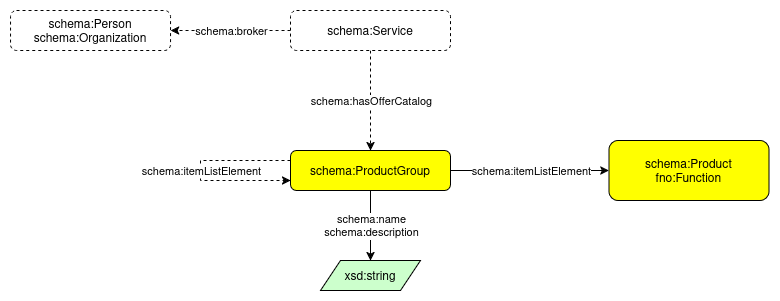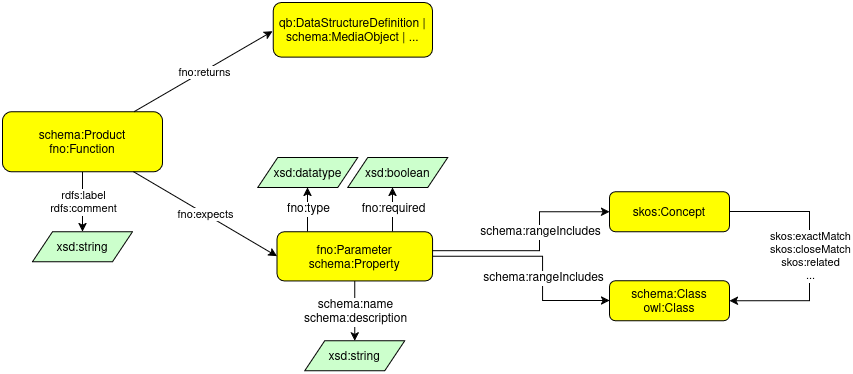Specification
UDAL specification
Title: Uniform Data Access Layer Specification
Version: 1.1
Date: 2025-03-14
Contributors: Marc Portier, Jorge Mendes, Laurian Van Maldeghem
Introduction
The Uniform Data Access Layer (UDAL) Specification defines a standardized approach for machine-usable descriptions of named queries, enabling consistent data retrieval across diverse data sources. Named queries encapsulate data access logic by specifying input parameters and well-defined result structures, ensuring a uniform interface regardless of the underlying database or storage system.
This specification focuses solely on the description of named queries, providing a clear and interoperable format without enforcing any particular implementation. By standardizing query descriptions, UDAL facilitates seamless integration, enhances reusability, and promotes consistency across various data-driven applications.
Overview
prefixes:
- rdf: http://www.w3.org/1999/02/22-rdf-syntax-ns#
- rdfs: http://www.w3.org/2000/01/rdf-schema#
- schema: http://schema.org/
- dcat: http://www.w3.org/ns/dcat#
- qb: http://purl.org/linked-data/cube#
- fno: https://w3id.org/function/ontology#
- xsd: http://www.w3.org/2001/XMLSchema#
- skos: http://www.w3.org/2004/02/skos/core#
Registry
A registry is defined as a schema:ProductGroup, listing named queries through the schema:itemListElement property.

Named Query
A Named Query is defined as both a schema:Product and an fno:Function. Input parameters and result structures are described in a standardized way through the fno:expects and fno:returns properties, respectively.
Input parameters represent optional filters for the result. They are instances of both fno:Parameter and schema:Property and are minimally described by the following properties:
- Name (
schema:name): The name of the input parameter. - Description (
schema:description): A human-readable description of the input parameter. - Expected Concept/Class (
schema:rangeIncludes): The conceptual category or class of the input parameter — that is, what the parameter’s values represent. (Note: This does not necessarily need to match any concepts or classes in the result structure.)
Optionally, one can also define:
- Requirement (
fno:required): Whether the input parameter is required or optional. - Datatype (
fno:type): The expected datatype of the input parameter.
The resulting output structure depends on the type of data being returned.
Tabular data results
When the expected output is tabular data, the result is described using qb:DataStructureDefinition, which defines measures and dimensions.
Measures (qb:MeasureProperty) represent the numerical values or aggregated data expected in each row of the result. They are minimally described by:
- Label (
rdfs:label): The name of the measure. - Concept Representation (
qb:concept): What the cell values represent, being an index/key-like concept. - Expected Data Type (
rdfs:range): The expected type of the cell values. Since measures often will represent index like concepts, the expected type is likely to bexsd:integer.
Dimensions (qb:DimensionProperty) define the categorical variables/attributes that form the columns in the result. They are minimally described by:
- Label (
rdfs:label): The name of the dimension. - Concept Representation (
qb:concept): The meaning of the cell values in that column. What the cell values represent. This can be a reference to a concept or class. - Expected Data Type or Class (
rdfs:range): The expected type of the cell values. This can be a datatype or a reference to a class.
Media object results
When the expected output is a media object, the result is described using schema:MediaObject. This structure is used to represent files, images, videos, or any other media type. See the schema.org documentation for more information.
(Section to be completed when examples are available)
Concept Descriptions
In many cases, concepts need to be explicitly defined. The following properties are expected:
- Preferred Label (
skos:prefLabel): The name of the concept. - Definition or Scope Note (
skos:definition/skos:scopeNote): A description of the intended meaning and usage context.

